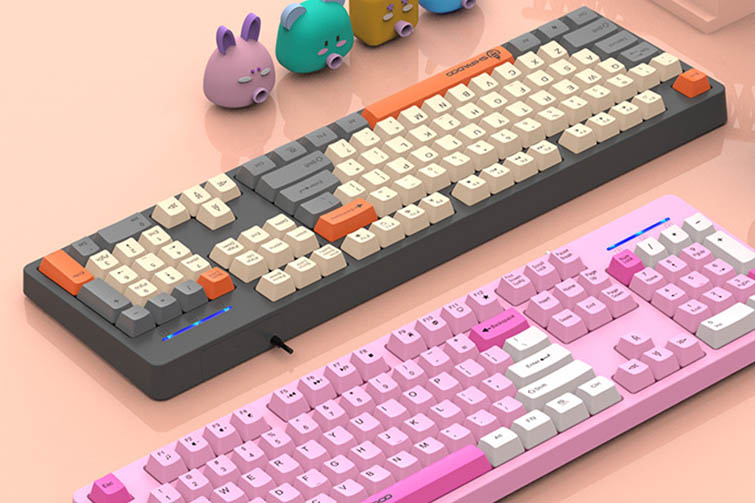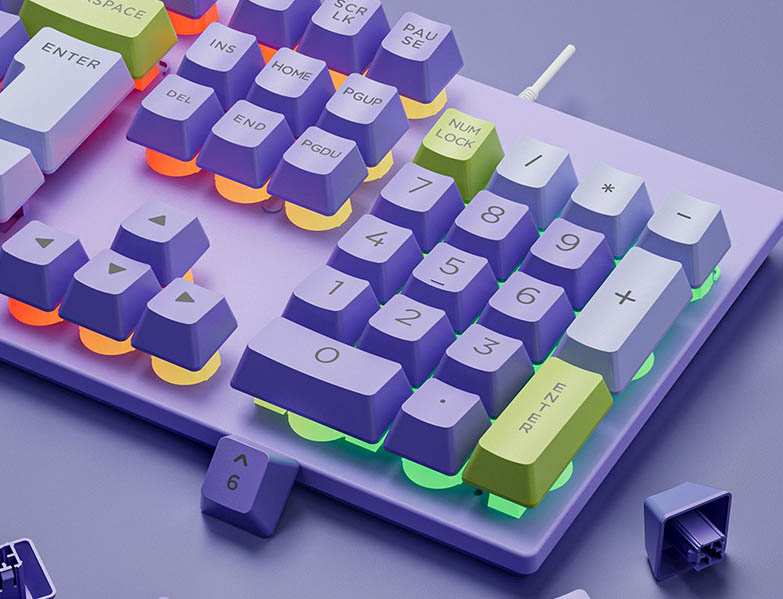

How to Choose the Right Keyboard: A Comprehensive Guide
Choosing the right keyboard can significantly enhance your typing experience, whether you’re a gamer, a programmer, or someone who spends a lot of time on a computer. With a plethora of options available, it can be daunting to find the perfect keyboard that meets your needs. This guide will help you understand the key factors to consider when selecting a keyboard.

1. Identify Your Purpose
The first step in choosing a keyboard is to identify your primary use case. Different activities require different features:
- Gaming: Look for keyboards with features like customizable RGB lighting, programmable macro keys, and high polling rates. Mechanical keyboards with switches like Cherry MX Red or Blue are popular among gamers for their responsiveness and tactile feedback.
- Typing/Programming: Ergonomic design and comfortable key switches are crucial. Mechanical keyboards with Cherry MX Brown or Blue switches are often preferred for their tactile feedback, which helps reduce typing fatigue.
- General Use: For everyday tasks, a membrane keyboard or a hybrid mechanical keyboard can be sufficient. Consider features like wireless connectivity and media control keys for added convenience.
2. Understand Keyboard Types
Keyboards come in various types, each with its own advantages and disadvantages:
- Mechanical Keyboards: Known for their durability and tactile feedback, mechanical keyboards use individual mechanical switches for each key. They are preferred for typing and gaming due to their responsiveness and longevity.
- Membrane Keyboards: These keyboards use a pressure pad system. They are generally quieter and more affordable but may not offer the same level of tactile feedback or durability as mechanical keyboards.
- Scissor-Switch Keyboards: Commonly found in laptops, these keyboards offer a low profile and a quiet typing experience. They are a good middle ground between mechanical and membrane keyboards.
- Ergonomic Keyboards: Designed to reduce strain and improve comfort, ergonomic keyboards come in various shapes and layouts to promote a more natural hand position.
3. Consider Switch Types
If you’re leaning towards a mechanical keyboard, it’s important to understand the different switch types:
- Linear Switches: Smooth keystrokes without tactile bumps, ideal for fast and repetitive key presses (e.g., Cherry MX Red).
- Tactile Switches: Provide a noticeable bump at the actuation point, which can help with typing accuracy (e.g., Cherry MX Brown).
- Clicky Switches: Similar to tactile switches but with an audible click, providing both tactile and auditory feedback (e.g., Cherry MX Blue).
4. Evaluate Key Layout and Design
Key layout and design can impact your typing speed and comfort:
- Full-Sized Keyboards: Include all standard keys, including a numeric keypad, function keys, and navigation keys.
- Tenkeyless (TKL) Keyboards: Omit the numeric keypad, making the keyboard more compact and allowing for better mouse positioning.
- Compact Keyboards: Further reduce size by eliminating additional keys, making them highly portable.
5. Check Connectivity Options
Keyboards can connect to your computer in several ways:
- Wired: Offers a reliable connection with no latency, suitable for gaming and tasks requiring high precision.
- Wireless: Provides more flexibility and a cleaner setup but may introduce latency and require regular battery changes or charging.
- Bluetooth: Ideal for use with multiple devices, allowing you to switch between them seamlessly.
6. Additional Features to Consider
- Backlighting: RGB or single-color backlighting can enhance visibility in low-light conditions and add aesthetic appeal.
- Programmable Keys: Useful for gamers and professionals who benefit from custom macros and shortcuts.
- Build Quality: Look for keyboards made with high-quality materials such as aluminum or reinforced plastic for better durability.
- Ergonomics: Features like wrist rests, adjustable feet, and split designs can help reduce strain during long typing sessions.
Conclusion
Choosing the right keyboard involves balancing your needs with the available features. By understanding the different types of keyboards, switch mechanisms, key layouts, and additional features, you can find a keyboard that enhances your productivity and comfort. Whether you’re gaming, typing, or performing everyday tasks, the right keyboard can make a significant difference in your overall computing experience.






